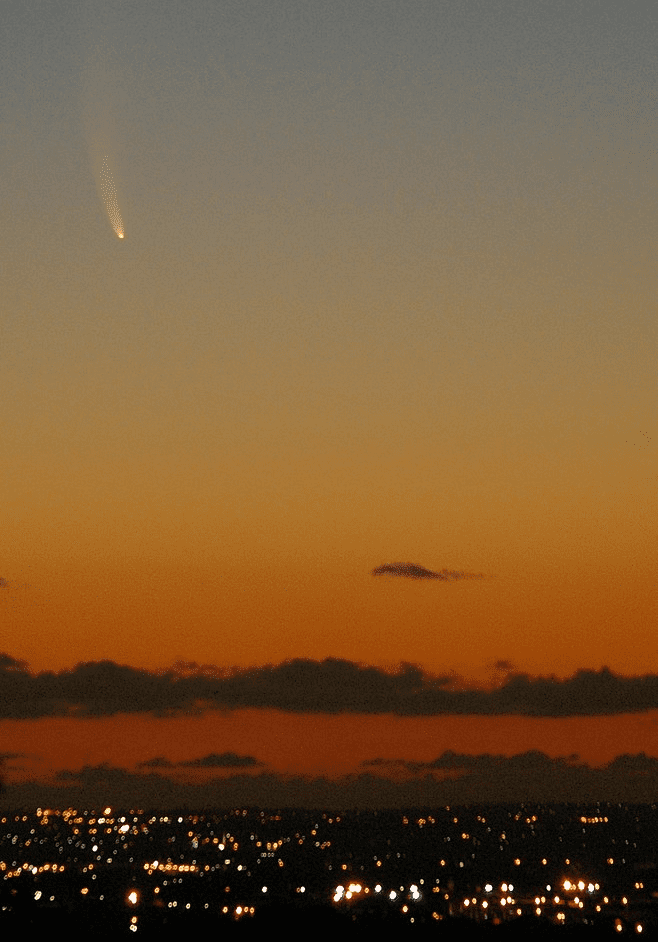A comet that will make a (somewhat) close approach to the Earth in September 2024 is already creating excitement among amateur astronomers. Comets are unpredictable beasts, and a great many have proven disappointing – but C/2023 A3 (Tsuchinshan-ATLAS) has many of the characteristics required to put on the best display for at least a decade.
Comets visit the inner solar system quite frequently, but few can be seen with the naked eye. Most are either regular visitors (short period) that have been slowly losing material on previous approaches to the Sun and don’t have enough left to be very bright. Others never get close enough to Earth to put on a show.
Tsuchinshan-ATLAS passes both those tests. Its orbit is so long it there is debate as to whether it visited the inner solar system 80,000 years ago, or if it never has. At closest approach, it will be 58 million kilometers (36 million miles) or just under 0.39 AU (Earth-Sun distance) from the Earth.
Estimates for cometary brightness have a great deal more uncertainty than for its path. This is no giant object like the megacomet Bernardinelli-Bernstein. However, we can already see signs of a tail as low melting point ices sublimate to gas, even though it is still considerably further from the Sun than Jupiter. By the time Tsuchinshan-ATLAS is inside the orbit of Venus, gases will be streaming off it, taking dust with them and producing a tail that is likely to stretch a long way across the sky.
How far and how bright the tail will be depends greatly on the exact compositions of rock and ice that make up Tsuchinshan-ATLAS, and whether it holds together or breaks up in the scorching rays of the Sun.
Comet modeler Gideon van Buitenen notes on his website; “The ability of comets to either disappoint or pleasantly surprise us, is one of many things that make them so interesting.” With that in mind, van Buitenen predicts a peak magnitude of zero at the time of writing (the figure is being updated every six hours based on new observations).
This would make it brighter than all but the four brightest stars, and about forty times brighter than C/2022 E3. This figure, however, leaves out the possibility of forward scattering – which, if it occurs, could make Tsuchinshan-ATLAS reflect almost as much light toward Earth as Venus at its brightest. Moreover, it will still be close to the celestial equator, well located for most of the world to see.

Tsuchinshan-ATLAS is currently within a degree of the celestial equator, making it visible from almost every part of the Earth. Unfortunately at 18th magnitude, it is beyond the reach of most amateur telescopes. Even with binoculars, it will take until July or August next year to be visible, but should then brighten quickly.
A common problem with observing comets is that they are usually brightest when close to the Sun, and therefore often impossible to see from Earth. Tsuchinshan-ATLAS suffers from this to some extent, but it is likely to put on an impressive display in the early mornings before it becomes too close to the Sun to see.
Its outward-bound journey is harder to predict – it could have lost so much material previously that it’s a fizzer, or it could be the best comet since McNaught in 2007.
Because comets span so much of the sky, they are much more affected by light pollution than stars of similar brightness – but at least city dwellers keen to see Tsuchinshan-ATLAS have plenty of time to book a holiday.
Source Link: Newly Discovered Comet Could Outshine The Brightest Stars Next Year